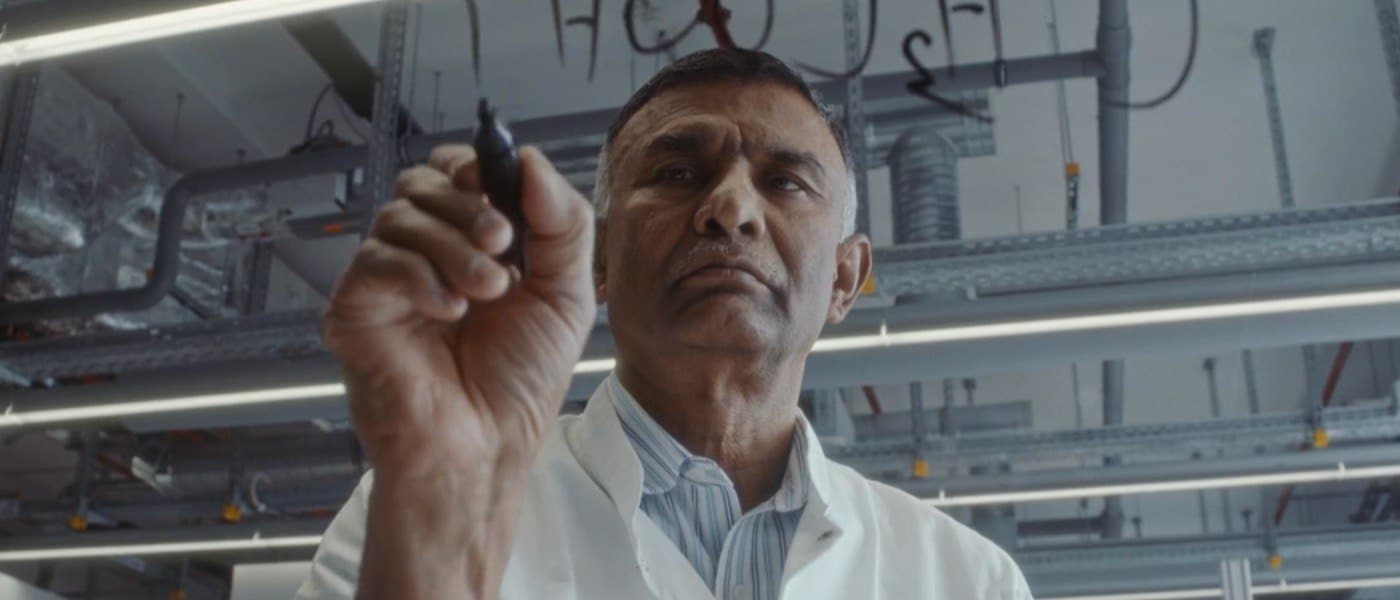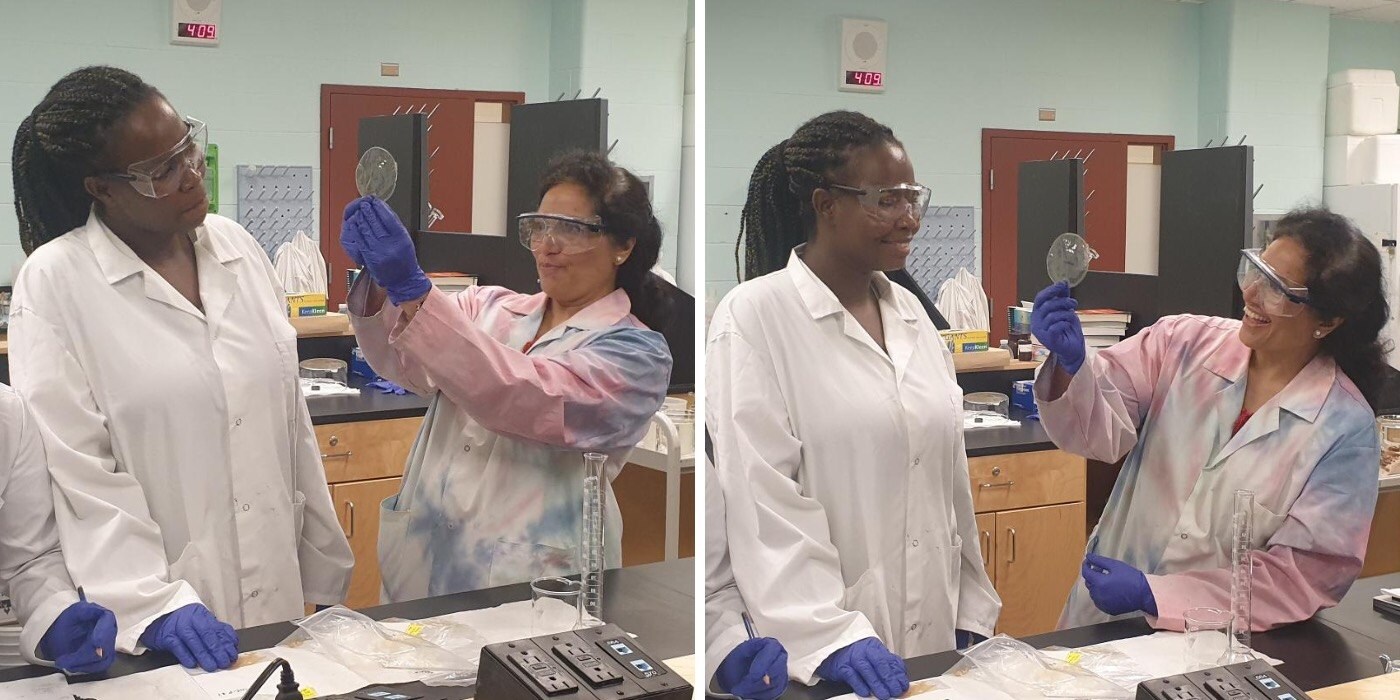Two chemists working in different settings bring a greener lens to the bench and empower others to do the same.

Dr. Ettigounder (“Samy”) Ponnusamy is key leader in green chemistry at Merck.
December 13, 2023 | 6 min
In the early 2000s, Dr. Ettigounder (“Samy”) Ponnusamy was working as a scientist at Merck in St. Louis, USA. He started a monthly call that ended up changing the course of his career. It left such an impact that years later, he remembers the call-in number and the exact time: every third Tuesday at 8 a.m.
He established the meetings because something bugged him. While he had a knack for developing new products — accumulating seven patents in seven years — he wasn’t satisfied. The more he looked around the industry, the more he felt there was an opportunity to make a change. An opportunity to think differently — to think greener — when developing a new product and process.
Those monthly calls were an important step in taking ideas into action. They started small, with just a handful of chemists. Over time, the numbers and interest grew. Ponnusamy began to realize that these conversations were not only worthwhile for chemists on the call but also worthwhile for business, and beyond. Since those early meetings, the interest in bringing a sustainable mindset into processes, operations and products has only intensified. Those conversations helped Merck debut new greener products and, eventually, a tool to gauge how green (or not) chemical processes are.
Going Greener
The field of green chemistry — which aims to reduce the impact of chemicals on human health and the environment — emerged in the early 1990s. Green chemistry was established by the 12 Principles of Green Chemistry that consider the full life cycle of a product, from material sourcing to waste management, and everything in between. While the principles themselves are widely applicable, it’s hard for researchers to quickly assess how green (or not) their products or processes are.
Ponnusamy and other chemists who joined the monthly call experienced this firsthand. They wanted to generate a single score to show the overall greenness of a chemical product or process. Ultimately, the chemists, with the help of bioinformatic experts, came up with DOZN, the first and only tool of its kind.
DOZN debuted to the public in May 2019 to quick acclaim. The tool has won numerous awards over the years and currently has thousands of registered users. It empowers scientists to carry out meaningful research while helping them reduce their environmental footprint. There is almost always more than one process that chemists can take to create a target molecule. These different synthesis processes often take different raw materials and create different byproducts. Using DOZN, chemists can directly compare how these approaches stack up based on green chemistry principles.
In some cases, small changes at the beginning stages of development turn into major improvements to a product’s greenness when produced at larger scales. This is the power of DOZN.
For Ponnusamy, the inspiration is simple. “I want to be a better chemist and a better model for future chemists,” he says. “Chemistry is going to change global sustainability.”
Ponnusamy knew the tool would be valuable for chemists in research labs. He didn’t imagine that educators would leverage the tool in their classrooms and labs with their own students, helping ensure the next generation of chemists think greener.
Into the Classroom
For years, chemistry students learned about green chemistry from a small blurb in a textbook or a brief mention in a lecture. In organic chemistry, students internalized structures and reactions, but rarely learned about the fate of used solvents or byproducts.
Faculty like Dr. Shegufa Shetranjiwalla, who now works as an assistant professor at Memorial University of Newfoundland, are changing this mentality in lecture halls, labs and beyond. She's doing it with help from scientists like Ponnusamy.
Just a year after DOZN launched externally, Shetranjiwalla attended a webinar presented by Ponnusamy and hosted by Beyond Benign, a global green chemistry education nonprofit that Merck recently deepened connections with. That was when she had her first — and what would prove to be instrumental — encounter with DOZN. At that point in her career, she was teaching at Trent University and looking for ways that fourth-year chemistry students could evaluate how sustainable (or not) different lab processes were. She was already integrating the 12 principles of green chemistry and other related tools into her work. By integrating DOZN in the curriculum, she was able to add an industrially relevant tool to her students’ toolboxes for informed, sustainable decision-making.

Dr. Shetranjiwalla guides a student in the lab.
“My students are passionate. They want to make a difference, but they don’t know how,” she says. Leveraging tools to evaluate “greenness” in the chemical process is one way they can make a difference. Shetranjiwalla is hopeful that by using tools like DOZN in their coursework, her students will be able to integrate the tool into future workplaces and introduce it to future colleagues. For students who pursue careers outside of chemistry, she’s optimistic that students will carry forward the analytical approach.
For scientists like Shetranjiwalla and Ponnusamy, they hope the green chemistry field disappears in their lifetime. It’s not that they want their efforts to fizzle, they want all chemists to think greener. Young chemists need to be able to hit the ground running — with their green chemistry hats on — when they enter the workforce.
With tools like DOZN, Merck is making that a reality — and taking green chemistry from principles into practice.
About DOZN
DOZN is a quantitative, industry-first tool that compares the relative greenness of similar chemicals, synthetic routes and chemical processes. The tool distills 12 Principles of Green Chemistry into three major impact areas: improve resource use, energy efficiency and minimize human and environmental hazards. Merck scientists use the tool to re-engineer existing products and evaluate processes as they work. You can use it too! Join the more than 1,900 users worldwide and register to use the free tool.
To continue reading please sign in or create an account.
Don't Have An Account?